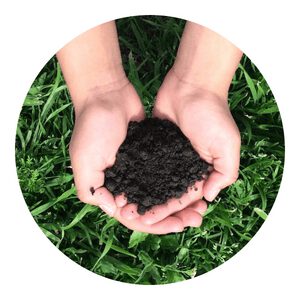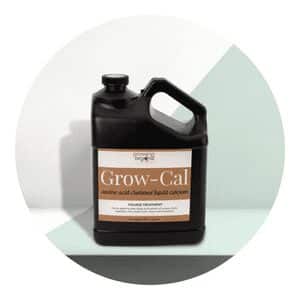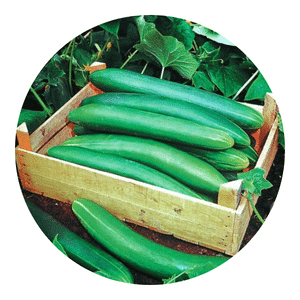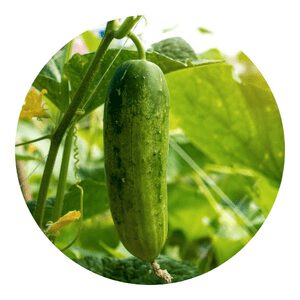How to grow Sweet Success Cucumber
Growing a successful garden is an incredibly rewarding experience, and with the right know-how, it’s easier than ever.
Sweet Success cucumbers are a great choice for novice and experienced gardeners alike; they’re versatile, easy to care for, and have a delightful flavor.
If you’re wondering how to grow Sweet Success cucumber in your garden, look no further.
Table of Contents
Sweet Success Cucumber
When it comes to growing cucumbers, Sweet Success is the perfect variety to grow.
Not only are Sweet Success cucumbers extra tasty, but they are also easy to take care of and have a fast turnaround time from seed to harvest.
In addition, Sweet Success cucumbers require little space for cultivation, making them an ideal option for both professional and amateur gardeners.
Especially attractive for those living in cooler climates is that Sweet Success Cucumber plants can withstand some frost without damage.
They also boast disease resistance which makes them a hit with gardeners who don’t want to go through the hassle of keeping their crops healthy through preventative measures such as fungicides and pesticides.
Furthermore, these cukes produce high yields even when grown in small spaces so you’re sure to get your money’s worth.
Planting: Soil, Seeds, Spacing
Growing a beautiful and bountiful vegetable garden is easier than you think! Planting sweet success cucumber is no exception.
When it comes to growing these delicious cucumbers, the key elements to consider are soil, seeds, and spacing.
The soil should be nutrient-rich with well-drained properties.
It should also be slightly acidic with a pH of 6.0 – 7.0 for optimal growth.
You can prepare the soil in advance by adding compost or aged manure before planting your cucumber seeds or seedlings.
Spacing between plants should also be considered when planting your sweet success cucumbers as overcrowding will result in poor yields due to competition for resources like water and nutrients.
Growing Conditions: Sunlight, Water
For gardeners looking to grow Sweet Success cucumbers, proper light and water are essential for a successful crop.
Sunlight is the most important factor when it comes to growing Sweet Success cucumbers; their vines need at least six to eight hours of direct sunlight each day in order for them to thrive.
To maximize the amount of sunlight available, gardeners should choose an area with southern exposure and clear out any nearby trees or other plants that could block the sun’s rays.
Additionally, make sure to rotate your plants regularly so they get even coverage throughout their growing season.
Water is also a key component in successfully growing Sweet Success cucumber plants.
Care: Fertilizing, Pruning
Growing Sweet Success Cucumber doesn’t have to be difficult.
With a few simple steps and proper care, you can enjoy the deliciousness of sweet cukes in no time.
Proper care involves both fertilizing and pruning your cucumbers correctly so they grow healthy and strong.
Fertilizing your cucumber plants is necessary to ensure abundant growth.
During the growing season you should use slow-release fertilizer for optimal results.
This will provide the plant with all the nutrients it needs without having to do too much work from you!
Additionally, if needed, a foliar spray fertilizer can also be used mid-season as an extra boost for your cucumbers.
Pruning is also important to ensure that your cucumber plants remain healthy and productive throughout the summer months.
Grow Success Cuke's so fun, in shades of green they come. Plant these sweet treats in springtime air, all the veggies that you could care. The leaves a-twine, gaze and smile, the vines grwo long for miles and miles. Harvest in summer, sun blesses all, these cukes so crisp, answer Nature's call!
Chappy The Gardener
Pest Control: Prevention & Treatment
Pest Control: Prevention & Treatment is an important topic for those who are interested in growing Sweet Success Cucumber.
Common pests that may affect Sweet Success Cucumbers include aphids, cucumber beetles, squash bugs and other insects.
Before beginning any type of pest control treatment, it is important to identify the specific types of pests that are affecting the plants.
Once the types of pests have been identified, a variety of methods can be used to control them.
These methods include physical removal or natural predators such as beneficial insects or birds.
It is also important to monitor the plants regularly for signs of new infestations so that preventive measures can be taken before they become more severe.
Harvesting Tips: Timing & Technique
Growing Sweet Success cucumbers can be an enjoyable and rewarding experience.
Learning the proper timing and technique for harvesting these cucumbers is essential to ensure that they are harvested at their peak ripeness.
Here are some tips on how to time and execute your Sweet Success cucumber harvest efficiently and effectively.
Sweet Success cucumbers should be harvested when they reach 8-10 inches in length, or when their skin has turned a deep green color with light yellow stripes running down its length.
When the cuke is ready for harvest, carefully cut it from the stem, leaving about 1 inch of stem attached to the fruit.
Make sure not to twist or pull on the fruit as this may damage both it and the plants remaining cucumbers.
Benefits of Using Organic Fertilizer on Grow Diva Cucumbers
Organic fertilizer is becoming increasingly popular with gardeners and farmers looking to produce safe, healthy produce.
When it comes to growing Sweet Success Cucumbers, the benefits of using organic fertilizer are plentiful.
Not only does it provide essential nutrients to the soil, but it also helps keep pests away while ensuring that your cucumbers grow big and strong.
Organic fertilizer promotes plant growth by providing a balance of nitrogen, phosphorous and potassium as well as trace minerals like sulphur, boron and zinc.
This ensures that plants get all the nutrients they need for optimal growth – something synthetic fertilizers don’t offer.
Additionally, organic fertilizers are natural so you don’t have to worry about any toxic residues getting into your cucumber crop or any other produce you may be growing in the same area.
Types of Organic Fertilizer for Diva Cucumbers
Organic gardening is becoming increasingly popular, and one of the most important elements of success is choosing the right fertilizer.
Diva cucumbers are a unique variety that require special attention when it comes to feeding.
The key to achieving sweet, juicy cucumbers is selecting organic fertilizers specifically designed for this type of plant.
Here we will explore three types of organic fertilizer that work best for Diva cucumbers.
Fish emulsion is derived from fish parts, including scales and bones, which are broken down into a liquid form.
This organic fertilizer provides an abundance of micronutrients as well as high levels of nitrogen – which helps promote vegetative growth in plants like cucumbers.
Compost tea is made by steeping composted materials in water and can be used to quickly increase the number beneficial microbes in soil around Diva Cucumber roots.
Tips to grow Sweet Success Cucumber Hydroponically
Growing Sweet Success cucumbers hydroponically is a great way to get the most flavor and nutrients out of this delicious summertime treat.
Cucumbers are not only tasty, but they are also relatively easy to grow in a hydroponic system.
Here are some tips for getting the best results from your hydroponic cucumber garden:
First, make sure you start with healthy, disease-free plants and seedlings.
By starting with good quality seeds or seedlings, you will reduce the risk of disease and pest infestations that can ruin your crop.
It’s also important to provide plenty of light—at least 6 hours per day—so that the cucumber plants can photosynthesize properly.
How to grow Sweet Success Cucumber Aquaponics
Aquaponics is becoming a popular way to grow vegetables and fruits without the use of soil.
Sweet Success cucumbers are a great option for aquaponic growers looking for an easy-to-grow, high yield crop.
First, create an ideal environment for the sweet success cucumber plants by ensuring adequate light levels, water temperature and pH levels.
Utilizing a deep-water raft system with mesh bottoms allows the roots of the cucumber plants to be submerged in nutrient-rich water while their leaves remain above water level.
Secondly, obtain high quality seeds specifically designed for aquaponic systems; this ensures that the cukes will thrive in the unique environment created by your system’s combination of fish waste, bacteria and plant life.
How to grow Sweet Success Cucumber in a Raised Beds
Growers of all skill levels can benefit from learning how to grow Sweet Success Cucumber in a raised bed.
This quick-growing variety of cucumber is an ideal choice for gardeners who want to enjoy the fruits of their labor without spending too much time tending a garden.
With proper preparation and care, growing Sweet Success Cucumber in raised beds offers impressive yields with fewer pests and diseases than traditional ground-grown plants.
To begin, choose a planting site that receives full sun exposure for at least six hours each day.
Make sure the soil is loose and well-draining to provide proper drainage and aeration.
Once the site is selected, create raised beds using soil or compost mixed with aged manure or organic material.
In conclusion,growing Sweet Success Cucumbers is a rewarding experience.
With its sweet taste, disease-resistant properties, and easy growing methods, it’s the perfect cucumber to add to your garden this season.
Although it does require full sun and warm temperatures to thrive, following these simple steps can ensure that your cucumber plants are successful.
Don’t be afraid to experiment with different fertilizing techniques or soil types in order to achieve optimal growth.
Click To Grow
Helps Us Grow – Share If You Like
















